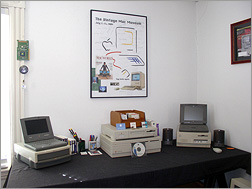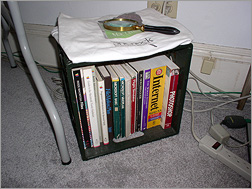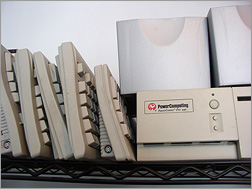PowerPC Beige
Beleagured Apple Computer
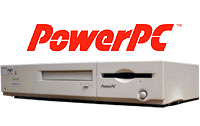
NuBus PowerMacs – 1994
Apple’s first major platform transition for the Macintosh (there have been several, hardware & software) was the switch from Motorola 68k to PowerPC processors. The NuBus PowerMacs – 6100 (low profile), 7100 (desktop) and 8100 (minitower) – used the new RISC PowerPC 601 processor and retained compatibility with existing (expensive) NuBus cards, but were often slower than the 68k based Quadras they replaced. Improvements to the 68k emulator code in Mac OS 8 along with (years later) G3 processor upgrade cards gave long life to this series of machines, but ultimately they were a transition series on the road to the PCI future. VMM TV: Serious Business Computer
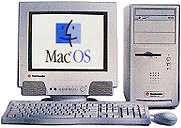
Macintosh Clones – PowerComputing PowerCenter Pro – 1995
For a short time in the mid 1990s, and too long after it would have made a difference in market share, Apple finally licensed the Mac OS to third party clone manufacturers. Based on Apple supplied PCI motherboards some of the clones were better bargains and performers than Apple’s own offerings. PowerComputing was the most successful of the lot (which also included Motorola, Radius and Umax), and their PowerCenter Pro and PowerTower Pro systems were the fastest Macs of their day. The VMM PowerCenter Pro runs Mac OS 8.6.
Steve Jobs killed the clones when he returned to the company in 1997, buying PowerComputing outright to stop sales cannibalization of Apple-branded models. An angst-filled chapter of the “Beleagured Apple Computer” era. VMM Blog: Send in the Clones
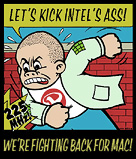

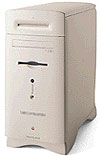
Performa 6400, PowerMac 6500 – 1996
The PowerMac 6500 started life as the Performa 6400, a noteable model in the otherwise regretful Performa line of consumer Macs (too many models, most underpowered). The 6400 used the 2nd generation PowerPC 603 processor, sported a graceful new tower case and had a removable motherboard, making it easy to add PCI cards and extra RAM. Eventually Apple speedbumped the system and moved the model into the PowerMac line, rechristened as the PowerMac 6500. Like the Mac IIci during the 68k era, the 6400/6500 series was a good cost/performance compromise and was popular for years among consumers and business users. VMM TV : Crowd Control
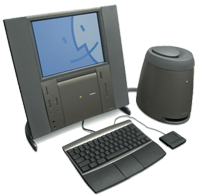
Twentieth Anniversary Macintosh (TAM) – 1997
To commemorate the twentieth anniversary of Apple Computer, the company decided to release a special edition Macintosh. This limited edition model was Apple’s vision of the future, a flat panel screen design with a vertical computer behind the screen. It included advanced AV capabilities like an FM/TV tuner and a custom Bose sound system, but with a $7500 price tag even home delivery by a tech-in-a-tux wasn’t enticing enough to attract buyers. The price of the computer dropped to as low as $1995 before Apple pulled the plug a year later.
Today the TAM has become a coveted collector’s item, and in retrospect is the ancestor of the iMac. It is also an early Jony Ive design – one created before Steve Jobs returned to Apple. VMM Blog: And a TAM Joins the Family
PowerMac 9600 – 1997
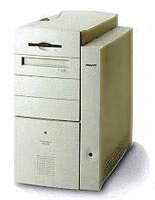 The x600 series of PowerMacs (7600, 8600, 9600) used the PowerPC 604 processor and were the first models which finally felt faster than the 68k models they replaced. They also marked the start of a design for serviceability focus in Apple’s pro desktop machines. Ever since the Quadra Apple’s cases were awkward to service and expand; the removable side panels on the 8600 & 9600 changed that in a big way. The 6 slot 9600 was a hit with audio & video workstation vendors, and shipped with a standard RJ-45 ethernet jack – no AAUI adapter needed (Apple loves custom connectors). This was Apple’s last 6 slot Mac ever, and commanded a high resale value for years.
The x600 series of PowerMacs (7600, 8600, 9600) used the PowerPC 604 processor and were the first models which finally felt faster than the 68k models they replaced. They also marked the start of a design for serviceability focus in Apple’s pro desktop machines. Ever since the Quadra Apple’s cases were awkward to service and expand; the removable side panels on the 8600 & 9600 changed that in a big way. The 6 slot 9600 was a hit with audio & video workstation vendors, and shipped with a standard RJ-45 ethernet jack – no AAUI adapter needed (Apple loves custom connectors). This was Apple’s last 6 slot Mac ever, and commanded a high resale value for years.
The VMM 9600 is a Mac OS 9.1 Graphic Arts Workstation, with an Apple Color OneScanner, Photoshop and Illustrator; it also runs iTunes 1.1 and SoundJam MP, the program from which iTunes evolved.
VMM Blog: Jaz Fights Back (and why I love the 9600)
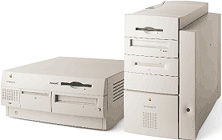
PowerMac G3 “Beige” – 1998
Another transition series, the Beige G3s were delivered a year after the clone makers were ready to go with their own never-shipped G3 models (G3 = third-generation PowerPC). Marketed as the bridge systems to Mac OS X, these models were of limited use with Apple’s new OS but made very good, fast Mac OS 9 workstations. Case design was similar to the 7600 and 8600 models they replaced, and Apple’s legacy SCSI and ADB buses were retained while adding internal IDE capability. Transition series models can be expensive for early adopters and constrained in the long run. When Apple first changes CPUs they typically stick a new motherboard in an old case; often it’s worth waiting for the completely new design to get the better system.

